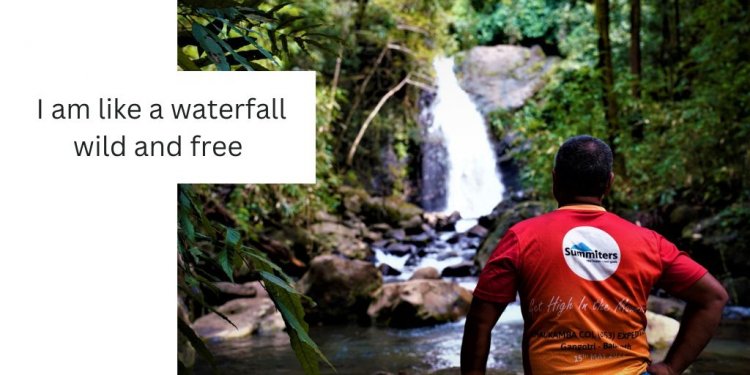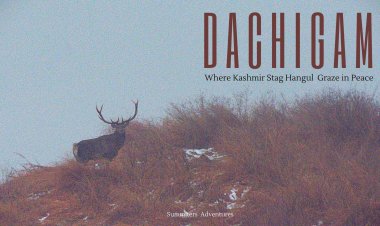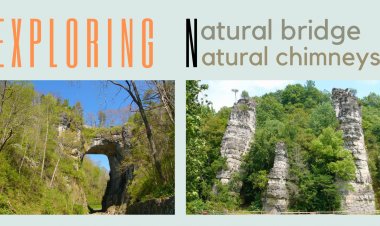Kuduremukha and Beyond : A Euphoric Journey
The charming locales of the western ghats have been an all-time favorite for weekend hikers and nature lovers. Among them, Kuduremukha, the hillock resembling a horse face is familiar to all. The alluring peak has innumerable serene spots to offer. Be it a hill, stream, or flora - Fauna and grasslands amaze you and always beckon you to explore it. As what lies beyond?
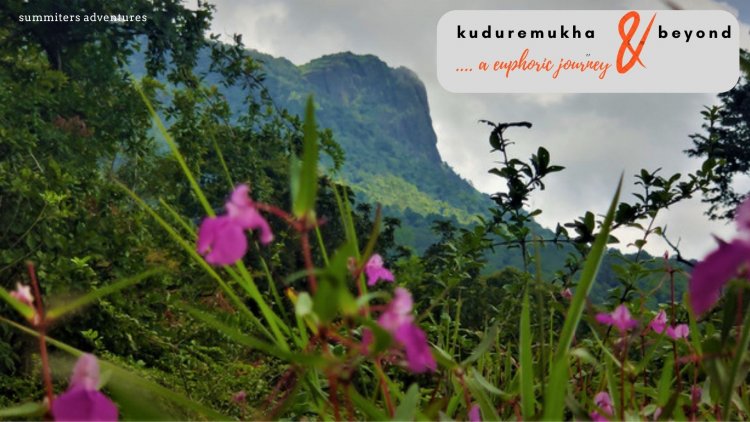
A journey in the hinterlands seemed almost like I myself was in a state of endless euphoria. I was flabbergasted to know about such a heavenly place close to Kudremukha. As my travails were always not confined to just summiting the elusive horse face peak. My eagerness led to deciphering a few of the serene and yet untrodden paths in the western ghats.
An overnight journey from the city brought us to the sleepy village. The rains had just receded a bit and as scheduled, exploration of rainforest, flora-fauna, less known summits, and waterfalls was on the agenda accompanied by a few passionate nature lovers.
Though I had known about the Kurinji Kallu peak and the flower which blooms once in 12 years. I was inquisitive to witness the environs of Kurcha Kallu Gudda juxtaposed to the conical peak.
I was in a state of illusion as it is a grassland land or a rocky peak. The rocky summit though visible from a considerable distance dominating the valley. I was eager to summit it, and to explore and know more about it.
We crossed the turbulent stream, with the help of the ropes and safety gear, at the orifice of the Shastri Gundi waterfalls which was in full swing. The initial path with our guide Sreenivas was through the unused forest jeep path. We walked through the canopy.
I could notice the Southern bird wing - The state butterfly of Karnataka, Common Jezebel, a few Moths, and a few more winged beauties engaged in daily chores. a damselfly fluttering in the sunlight. Malabar Pit vipers basking in sun, I followed them in the thickets and joined the group at regular intervals.
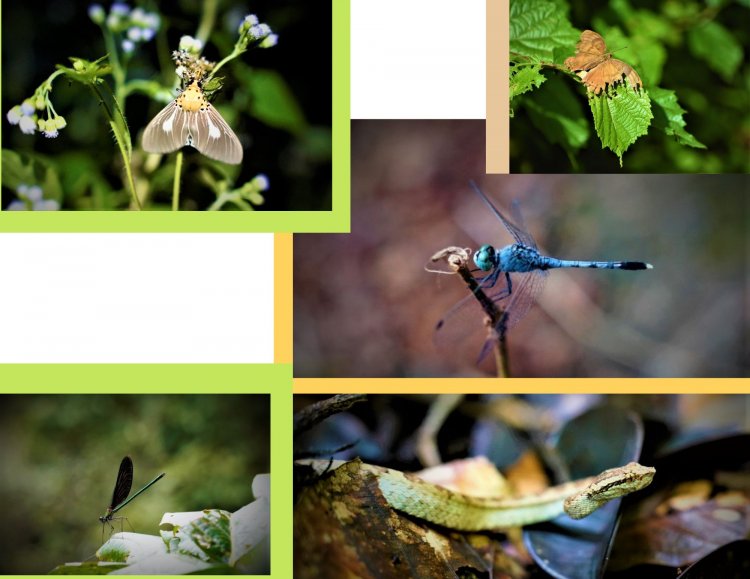
Walking parallel to the stream flowing down and later walking upward perpendicular to the stream. The path narrowed as we moved into the thickets. It seemed like we were in the fringes of Kuduremukha National Park.
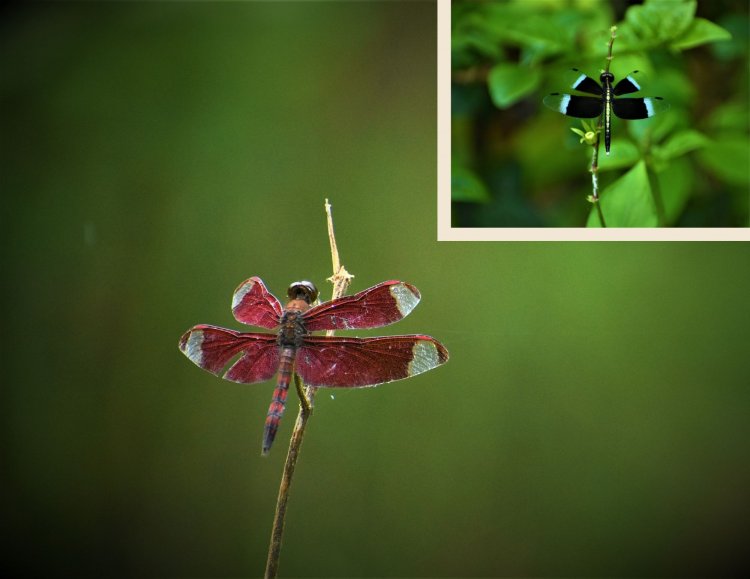
An hour of walking uphill brought us to the open balcony surrounded by meadows with views of peaks in distance. the distance peak looked impregnable from the distance. The valley was in a riot of colors with colorful flowers.
The conical peak looked more enigmatic than another face. Though we had the intention of exploring. The black clouds loomed over the horizon stopped us and soon began to drizzle. We were at a higher elevation with a view of the valley. We admired the ethereal views and photographed a few butterflies going around.
A day well spent in the thick environs. In no time we were close to the stream to witness the sunset. Our guide cautioned us to cross the stream before the rain, and we reached the homestay booked through Homestays Karnataka portal, the usual way.
A short hike to the anonymous peak was thrilling. and memorable!.
In the evening we hiked down to the waterfalls. The water was a bit less compared to our previous visit, but ideal to take a shower under it.
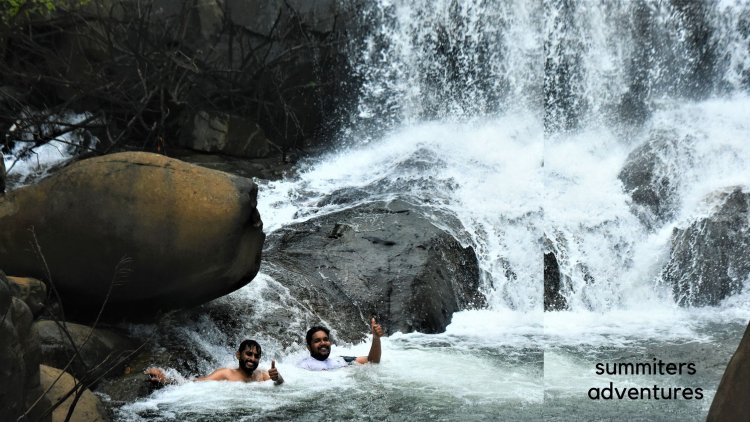
The light was getting dimmer. We climbed up the rocks to witness the sunset from the top of the waterfalls. The colorful sky was a perfect silhouette. After filling souls with colorful we walked towards stay to reach before dark. A few of the members were fortunate to spot an adorable lovable-looking creature slender loris on a betel nut treetop watching us silently. The powerful eyes were glowing large. We came to know from Afran that Loris tardigradus malabaricus is a subspecies of the slender loris which is only found in India. Their greatest concentration is found in the Western Ghats.
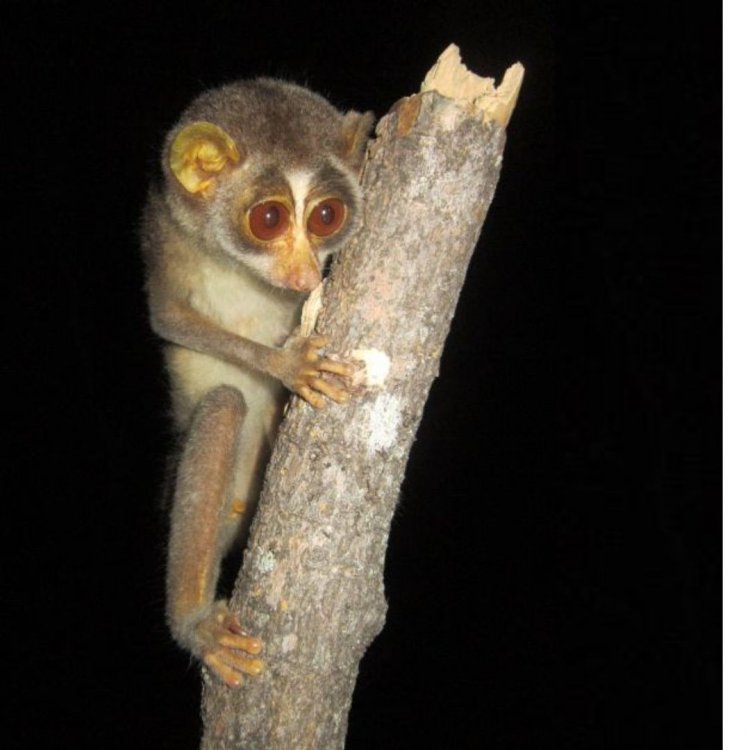
The Slender Loris is considered highly endangered and is listed in the IUCN Red List The slender loris is about the size of a chipmunk, with long, pencil-thin arms and legs. The slender loris is an arboreal animal and spends most of its life in trees. Their movements are slow and precise. They like to travel along the top of branches.In the local Kannada language in the Malenadu region, it is called Kaadu Paapa - which Means Child of Forest
The slender loris is for the most part insectivorous. This means they eat insects, but they will also eat slugs, young leaves, flowers, shoots, and occasionally eggs and nestlings. They can stretch and twist their long arms and legs through the branches without alerting their prey. The slender loris eats a lot of noxious and foul-smelling insects. They particularly like the acacia ant whose bite can numb a human arm. They also like toxic beetles and roaches. They are one of the few "venomous" mammals in the world, lorises can deliver a potentially painful bite. However, bites on humans are still unheard of, due to the shy and timid nature of these animals. They emit toxic secretions from their armpits, which get activated by their saliva when they rub the secretions into their mouths with their hands. This is thought to soothe or defend against the sting of any of these toxic insects.
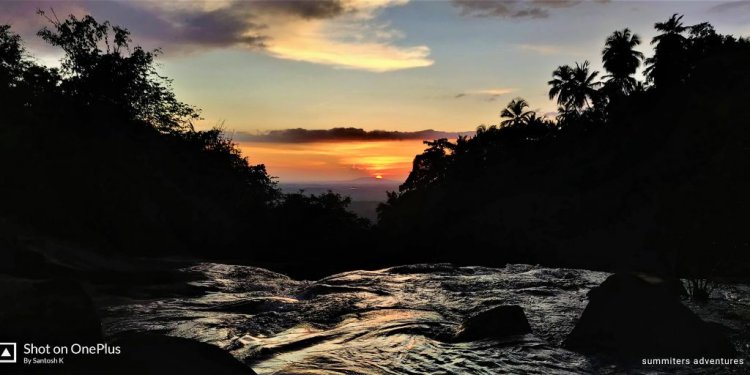
After spending a few precious moments with the slow creature Loris, we reached out to stay in the night. As it was late our host Sreenivas was waiting for us. After having a luscious dinner, we set out with Afran again around 10 pm to explore creatures near the stream.
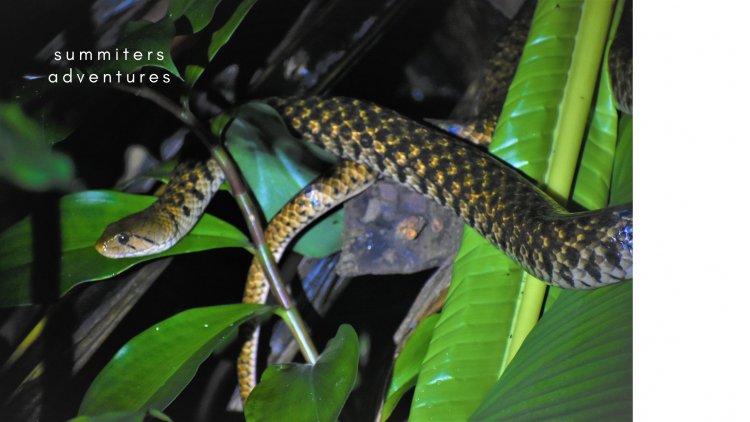
Walking around steadily listening to the cacophony, we could spot a Checkered Keelback preparing itself for a hunt. Afran said that they are also called Asiatic water snakes. They can be seen close to water bodies and are Non-Venomous.
We could identify the Kalidasa Lanata by its striking color and color a species of planthopper in the family Fulgoridae found in India and Blue Marmon butterfly glowing in the moonlight.
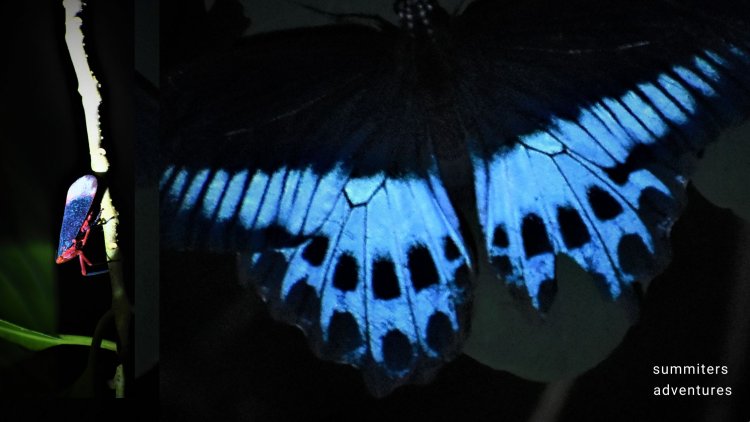
Our guided walk went on till 12 midnight. until it began to rain. The most sighted one was the bush frogs, Vine snakes, and Deccan Banded Gecko.....!.
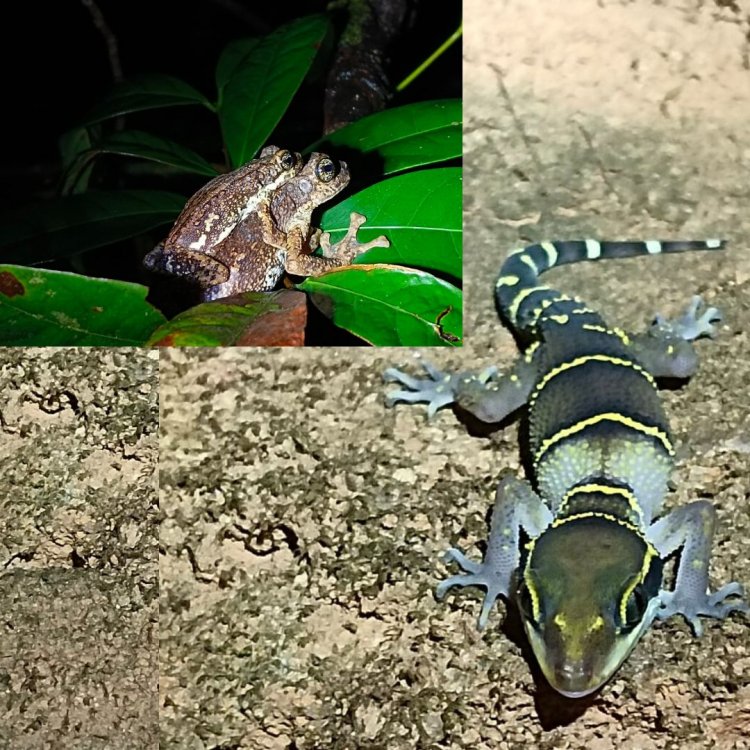
It rained heavily in the night. In the morning we could see some active movement of Malabar Giant squirrels.
After breakfast, accompanied by Sreenivas we decided to explore Waterfalls deep in the jungle. We applied snuff mixed with castor oil to keep away leeches. We walked through the dense jungle, passing through thick bushes, with steep descents and ascents. About 2 hours of the walk brought to the base of the waterfalls.
The whole picture of the cascade opened up as we neared the flowing water. A two-stepped waterfall cascading from a height of 100 feet was a sight to behold. Few of the members decided to spend leisurely below the small cascade. The murmuring sound of the falls was exhilarating!.
The base of the cascade was inviting. I and two others climbed on holding the roots of the uprooted tree, adding beauty to the surroundings. The dew drops kiss us, our footsteps becoming slippery making our climb slower.
View this post on Instagram
We approached the waterfalls and sat at a base beholding the falling water in all force. The whole place was not less compared to heaven. Though we had the intention to take bath under falls. We decided to be in limits, as it was an unknown place.
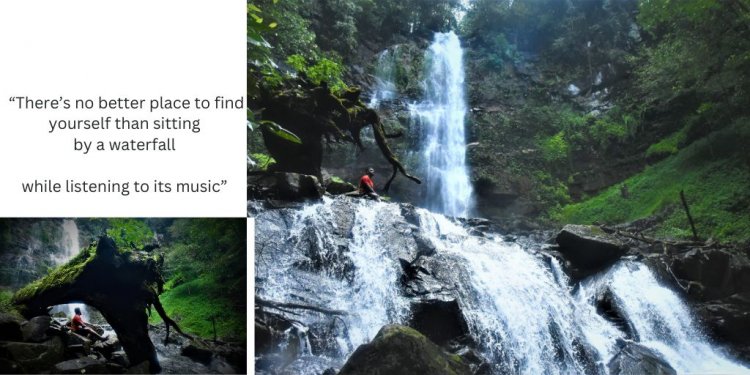
We spent about 2 -3 hours a the base of the waterfalls. The pleasure of taking a trek of 6 to 8 km within the forest and then witnessing a waterfall is priceless. The entire trekking route offers you an awesome mixture of Flora and Fauna along with the best sites of dense canopy and forest cover to behold.
We could sight, a female green Malabar Pit Viper camouflaged below the bark of a fallen tree. After filling our tummies, we walked up to explore and savor yet another waterfall.
Waterfalls small or big will definitely amaze you. Isnt it....?
